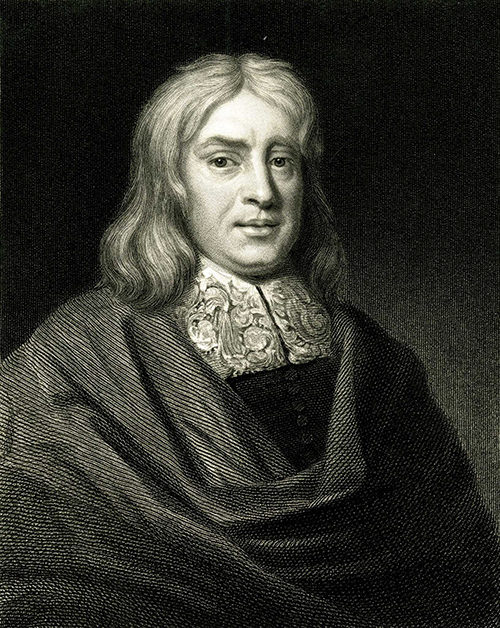Observationes medicae circa morborum acutorum historiam et curationem. Londini, G. Kettilby, 1676.
Tractatus de padagra et hydrope. Londini, G. Kettilby, 1683. First edition.
 Many eighteenth century medical practitioners followed in the footsteps of Thomas Sydenham, who is known as the “English Hippocrates” for his revival of Hippocratic methods. Born into a Puritan family in Dorset, Sydenham fought on the Puritan side during the English Civil War and became a protégé of Oliver Cromwell. His medical education was interrupted by his involvement in the war, but he did not enjoy academics anyway and preferred education by experience. Cromwell helped him set up medical practice in Westminster in 1655, where he was a physician for the remainder of his years, even before receiving his M.D. in 1676 (One Hund. Books 35). Distrustful of scientific theories and experimentation, Sydenham relied upon observation and experience in assessing proper treatments. He did not acknowledge or even study much of his forbearer’s medical ideas save Hippocrates, and there was a mutual disrespect between Sydenham and his contemporaries. However, medical historian Fielding Garrison believed this to be “the very secret to his success as an internist” (169).
Many eighteenth century medical practitioners followed in the footsteps of Thomas Sydenham, who is known as the “English Hippocrates” for his revival of Hippocratic methods. Born into a Puritan family in Dorset, Sydenham fought on the Puritan side during the English Civil War and became a protégé of Oliver Cromwell. His medical education was interrupted by his involvement in the war, but he did not enjoy academics anyway and preferred education by experience. Cromwell helped him set up medical practice in Westminster in 1655, where he was a physician for the remainder of his years, even before receiving his M.D. in 1676 (One Hund. Books 35). Distrustful of scientific theories and experimentation, Sydenham relied upon observation and experience in assessing proper treatments. He did not acknowledge or even study much of his forbearer’s medical ideas save Hippocrates, and there was a mutual disrespect between Sydenham and his contemporaries. However, medical historian Fielding Garrison believed this to be “the very secret to his success as an internist” (169).
As his nickname indicates, Sydenham concentrated his practice on bedside observation and clinical case histories just like Hippocrates. He was very successful in treating patients because experience gave him the ability to distinguish between different diseases that necessitated different treatment. In this process, he recognized that different diseases had their own natural histories which he carefully recorded, and that they belonged to species which he classified. This insight is one of his major contributions to the field of medicine. Also, he recorded the recurrence of epidemics, as well as their geographic and environmental variations and relationships. With this, Sydenham is recognized for being one of the founders of epidemiology (Garrison 270).
The work that comprises just about all of Sydenham’s major contributions is Observationes medicae. Though it is sometimes considered the third edition of one of his previous writings, Methodus curandi febres (1666), this 1676 version is the first definitive edition, which was rewritten and is considerably larger than the earlier volume (Heirs of Hippocrates 352). It includes his important studies of the London epidemics in his day and is the first attempt to classify diseases. However, the work that made Sydenham famous, Tractatus de padagra et hydrope (1683), or “Treatise on gout and dropsy”, distinguishes gout from rheumatism. The Reynolds-Finley Library holds a first edition copy of this famous book.
Cambridge Illus. Hist. Med., p. 169; Garrison, Hist. of Med., 4th Edition, pp. 169, 270; Heirs of Hippocrates, 352; Not. Med. Books, p. 89 One Hund. Books, 35; Reynolds Historical Library, Rare books and coll…, 3983, 3987.
Image: Thomas Sydenham, Print Collection, Reynolds-Finley Historical Library.
